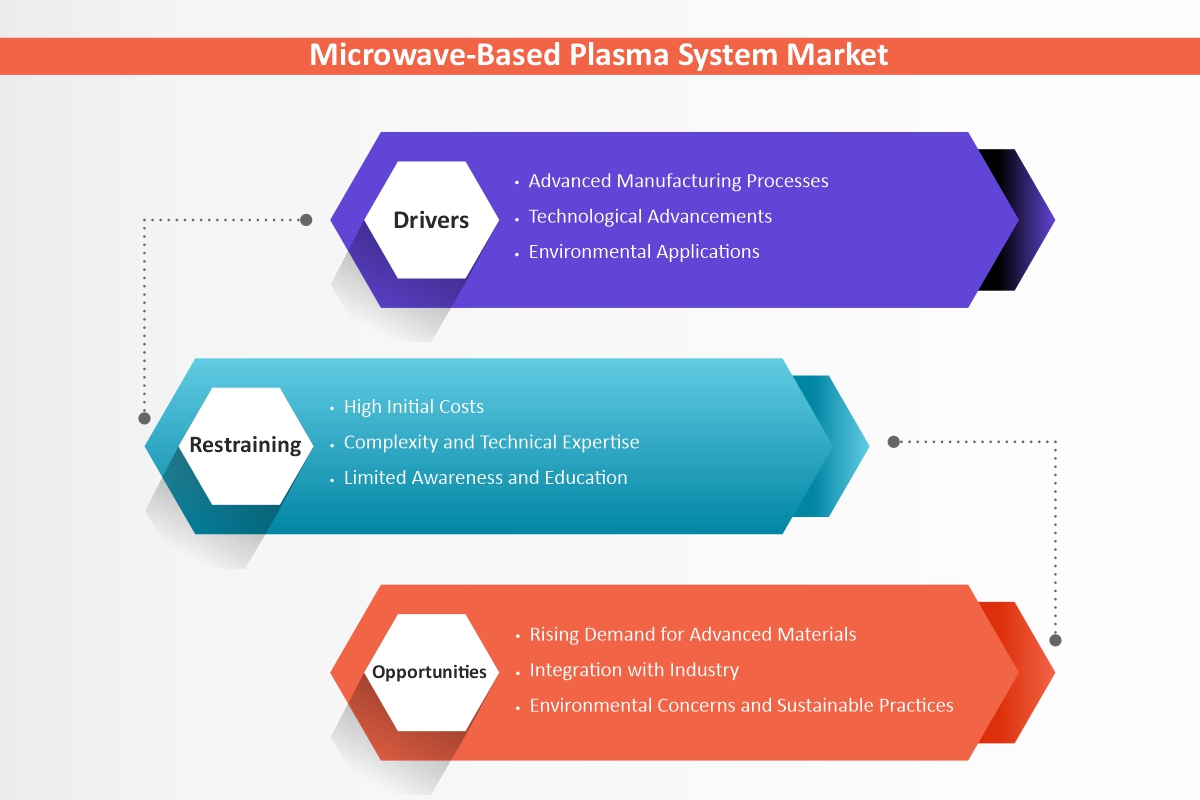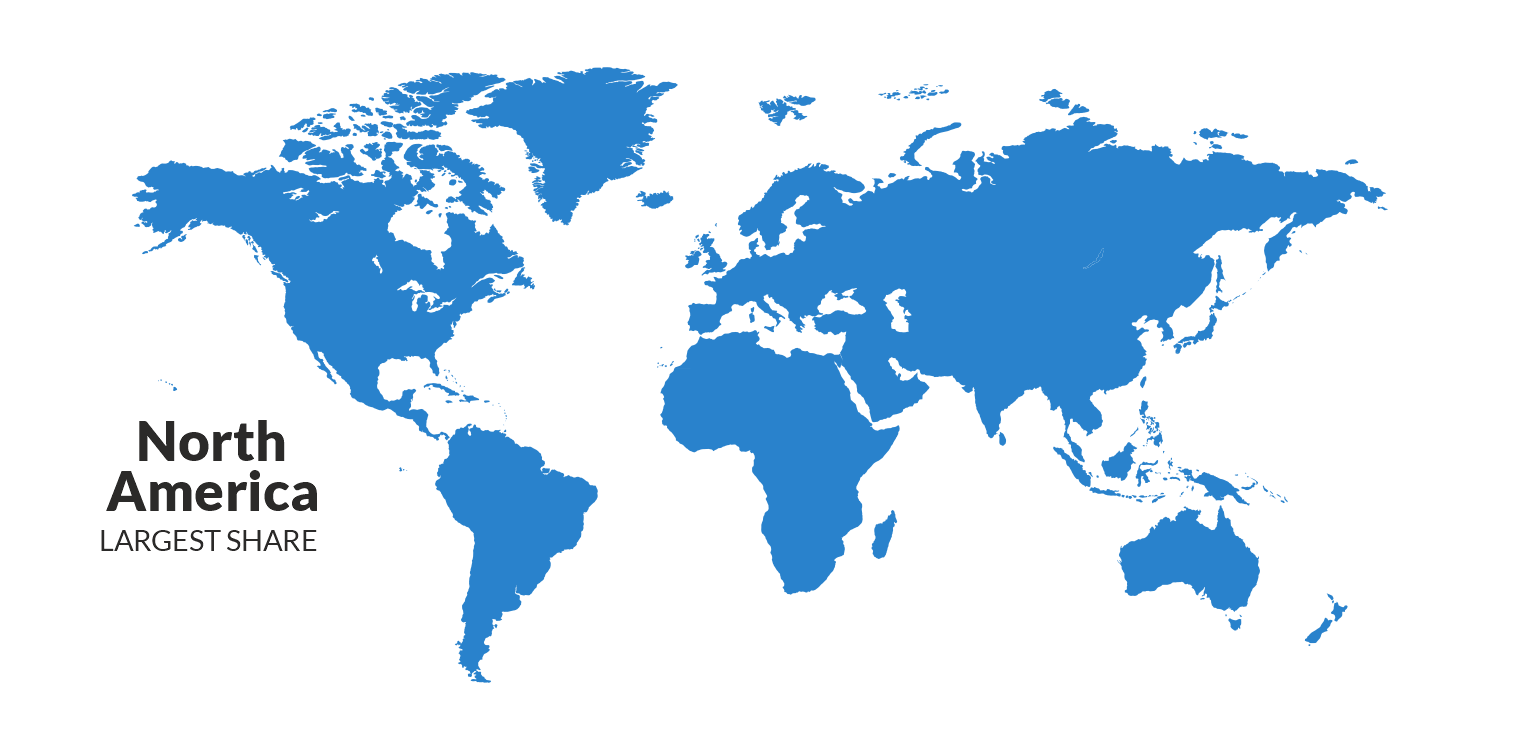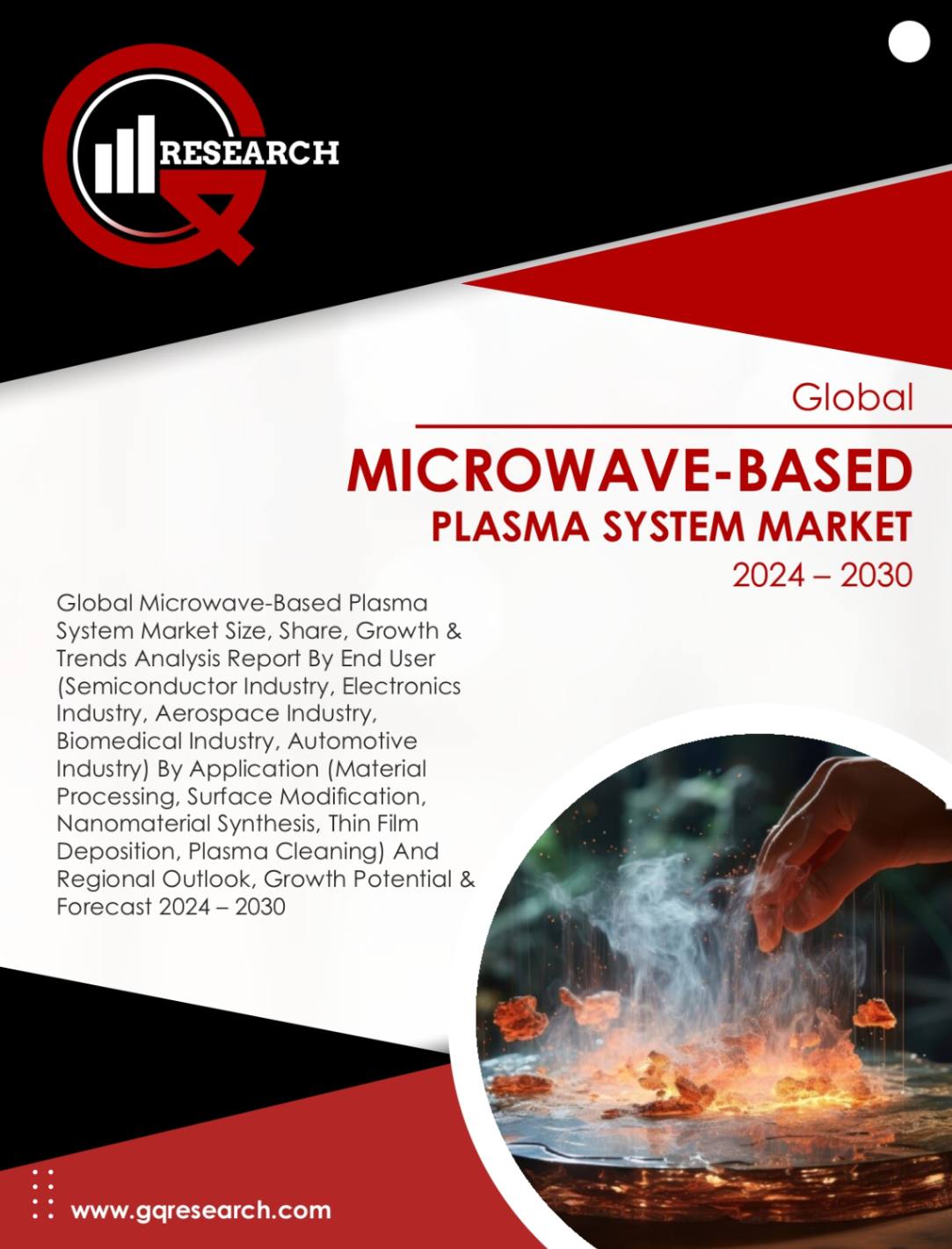Description
Global Microwave-Based Plasma System Market: Overview
Microwave-based plasma systems utilize microwaves to ionize gas, creating a high-energy state. This controlled plasma can be applied in various industrial processes, including material processing, surface treatment, and chemical synthesis. The efficiency and precision of microwave-based systems make them valuable in different applications.
Microwave-based plasma systems are a type of technology that employs microwaves to generate and sustain plasma. Plasma is a state of matter in which gas becomes ionized, forming a mixture of positively charged ions and free electrons. The application of microwaves in this context allows for controlled and efficient plasma generation.
Global Microwave-Based Plasma System Market: Covid-19 Impact
-
Delayed Projects and Investments:
Many industries, especially those not directly involved in essential services, experienced delays and cancellations in projects and investments. Companies may have deferred or reduced spending on advanced manufacturing technologies, including plasma systems.
-
Shifts in Industry Priorities:
Industries may have shifted their priorities during the pandemic, focusing on essential operations and cost-saving measures. This shift could impact the adoption of innovative technologies like microwave-based plasma systems, particularly if they are viewed as non-essential or cost-prohibitive during economic uncertainty.
-
Operational Challenges:
The pandemic has brought operational challenges, including workforce disruptions, remote work transitions, and safety concerns. Industries might have faced difficulties in implementing and maintaining new technologies during such challenging operational environments.
Global Microwave-Based Plasma System Market: Growth Drivers

-
Advanced Manufacturing Processes:
The demand for advanced manufacturing processes that offer precision, efficiency, and control is a key driver. Microwave-based plasma systems provide unique capabilities for material processing, surface treatment, and coatings, making them attractive for industries seeking cutting-edge technologies.
-
Technological Advancements:
Continuous advancements in microwave technology, plasma generation, and control systems contribute to the growth of the market. Innovations that improve the efficiency, reliability, and scalability of microwave-based plasma systems make them more appealing to a broader range of industries.
-
Environmental Applications:
Growing concerns about environmental sustainability and regulations drive the adoption of plasma technologies for environmental applications. Microwave-based plasma systems can be utilized in waste treatment, pollution control, and other eco-friendly processes.
Global Microwave-Based Plasma System Market: Restraining factors
-
High Initial Costs:
Microwave-based plasma systems often involve a significant initial investment. The high cost of acquiring and implementing these systems may be a barrier for some industries, especially smaller enterprises or those facing budget constraints.
-
Complexity and Technical Expertise:
The operation and maintenance of microwave-based plasma systems can be complex and may require specialized technical expertise. Companies may hesitate to adopt these systems if they lack the necessary skills in-house or if training is perceived as time-consuming.
-
Limited Awareness and Education:
Lack of awareness about the benefits and capabilities of microwave-based plasma systems can be a restraining factor. Industries may be hesitant to adopt new technologies if they are not fully informed about their advantages and potential applications.
Global Microwave-Based Plasma System Market: Opportunity Factors
-
Rising Demand for Advanced Materials:
As industries increasingly seek advanced materials with specific properties, microwave-based plasma systems offer opportunities for precise material processing, surface treatment, and coatings. The demand for high-performance materials in industries like aerospace, automotive, and electronics can drive the adoption of these systems.
-
Integration with Industry :
Industry characterized by the integration of digital technologies and smart manufacturing processes provides opportunities for microwave-based plasma systems. These systems can be integrated with sensors and control systems, allowing for real-time monitoring, data analytics, and automation.
-
Environmental Concerns and Sustainable Practices:
The focus on environmental sustainability and regulations promoting eco-friendly practices creates opportunities for microwave-based plasma systems. These systems can be employed in waste treatment, pollution control, and other environmentally friendly processes, aligning with the growing emphasis on sustainability.
Global Microwave-Based Plasma System Market: Challenges
-
High Initial Investment:
The significant initial investment required for acquiring and implementing microwave-based plasma systems can be a barrier to adoption. Industries may be hesitant to invest in expensive technology, especially when there are alternative solutions available.
-
The complexity of Operation and Maintenance:
Microwave-based plasma systems can be complex to operate and maintain, requiring specialized technical expertise. The need for skilled personnel and the complexity of the systems may pose challenges for industries that do not have access to such expertise.
-
Limited Awareness and Education:
Lack of awareness about the capabilities and benefits of microwave-based plasma systems may hinder adoption. Industries may not consider these systems if they are not well-informed about how the technology can address their specific needs.
Global Microwave-Based Plasma System Market: Segmentation
By End User market is segmented into the Semiconductor Industry, Electronics Industry, Aerospace Industry, Biomedical Industry, and Automotive Industry. Microwave-based plasma systems find application in the semiconductor industry for processes like plasma etching and deposition. These processes are critical in semiconductor fabrication for creating precise patterns on semiconductor wafers. Microwave-based plasma systems can be applied in the biomedical industry for sterilization processes and the manufacturing of medical devices. The technology’s ability to provide sterile conditions is crucial in medical applications.
By Application, the market is segmented into Material Processing, Surface Modification, Nanomaterial Synthesis, Thin Film Deposition, and Plasma Cleaning. Thin film deposition applications are significant in industries like semiconductors and electronics. Microwave-based plasma systems can contribute to the precise deposition of thin films for various electronic components.
Global Microwave-Based Plasma System Market: Regional Insights

The North American region, including the United States and Canada, often sees early adoption of advanced technologies. The semiconductor industry in Silicon Valley, aerospace hubs, and a strong focus on research and development contribute to the demand for innovative technologies like microwave-based plasma systems.
Europe has a well-established electronics industry, aerospace manufacturing, and a growing emphasis on sustainable technologies. These factors contribute to the demand for plasma systems. European regulations promoting environmental sustainability can also drive adoption in industries requiring eco-friendly processes.
Asia-Pacific, including countries like China, Japan, South Korea, and India, is a significant manufacturing hub. The presence of a robust semiconductor industry, electronics manufacturing, and a growing focus on aerospace contribute to the potential growth of the microwave-based plasma system market. Rapid industrialization and government initiatives can further boost adoption.
Latin America may experience moderate adoption, with the potential for growth in industries such as automotive manufacturing. Economic conditions, government policies, and infrastructure development can influence the pace of adoption in this region.
The Middle East may witness demand in industries like aerospace and electronics, driven by investments in infrastructure and technology. Africa’s adoption may be influenced by the development of specific industries and applications requiring plasma systems.
Global Microwave-Based Plasma System Market: Competitive Landscape
Tokyo Electron Ltd., Applied Materials, Inc., Veeco Instruments Inc., ASM International N.V., Lam Research Corporation, SPTS Technologies Ltd., Oxford Instruments PLC, EV Group AG, PlasmaTherm LLC, Technopla


